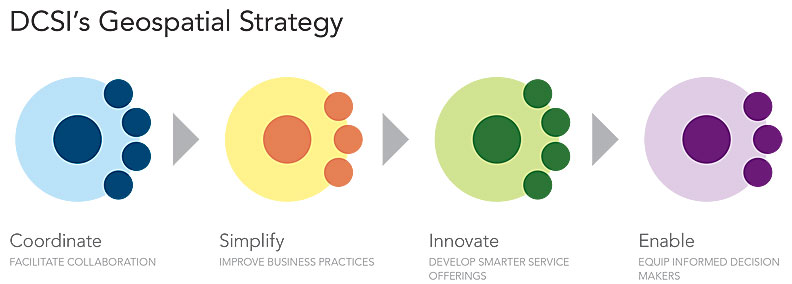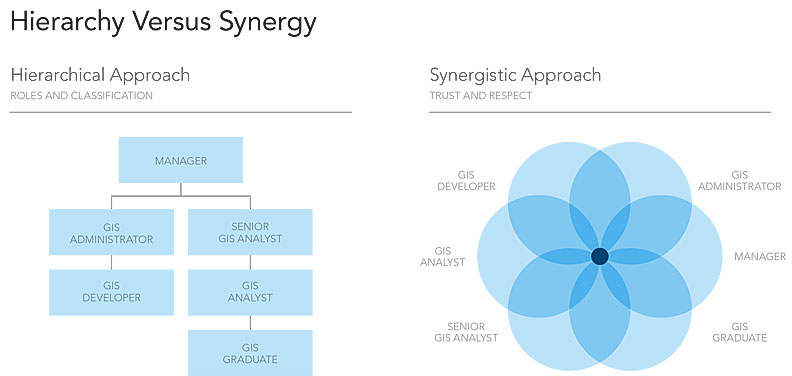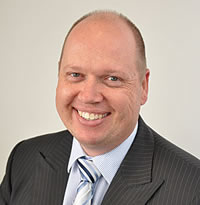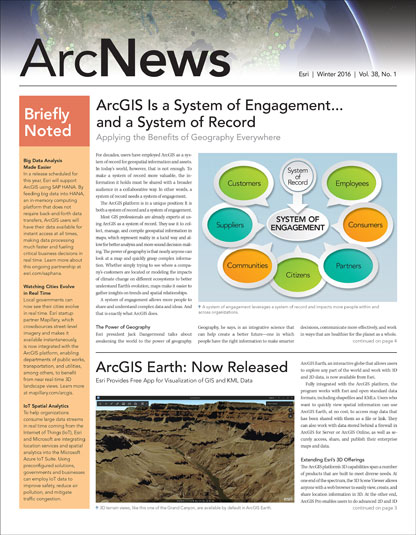Some GIS teams just keep winning within their organizations. They’re not necessarily the biggest GIS teams or the ones with the most resources. But something sets them apart.
The business and location intelligence services (GIS) team at the South Australia Department for Communities and Social Inclusion (DCSI) is one such team. It operates in the health and community sector, where GIS has much to offer. Yet it still stands out as a leader.
From my perspective, successful GIS teams focus on six objectives in particular that help them excel. For my team, this has made all the difference.
1. Dream to Change the World
Many geospatial professionals have dreams for designing better spaces, achieving more streamlined outcomes, improving organizational capacity, and enriching the lives of others. Unlocking these dreams and turning them into reality, however, requires alignment. Dreams need to be situated within an organization’s overarching strategy and designed to complement the organization’s vision. They should be articulated in a way that shows how these dreams will help the organization accomplish its goals.
At DCSI, each person on the GIS team brought his or her dreams to the table. For example, one team member wanted to use GIS to manage housing opportunities. So we built this and other dreams directly into the team’s GIS vision: to have location information enhance DCSI decisions and drive better outcomes for citizens.
We also folded these dreams into our GIS strategy, which aims to, among other things, provide the best services, support both independence and participation, and connect people to place. The four principles of our geospatial strategy are to coordinate, simplify, innovate, and enable. Under each principle, there are three or four actions that the team can use to measure performance.

Adhering to this plan allows the GIS team to deliver on each of its priorities, in turn communicating why DCSI should continue investing in GIS.
2. Reflect to Effect Change
Great leaders reflect on the past so they can understand how to move forward. GIS professionals should reflect on their work, too. These reflections should encompass successes and failures and focus especially on what was learned.
As a senior manager in DCSI, I often reflect on what we on the GIS team have done. What I see overall is that demand for our services has increased while our resources have stayed the same. But, because the GIS team and DCSI as a whole have embraced GIS as a platform, we continuously improve our business.
This is due, in part, to keeping in stride with technological advancements. In 1998, the GIS team at DCSI only serviced the public housing sector, so a database GIS approach—where data is stored on local drives and network sharing is minimal—worked well. But once demand for GIS services increased in 2004, the group shifted to a GIS server-centric approach, eventually opening up its services to the whole organization in 2006. In early 2014, with even more people catching on to the importance and dynamism of GIS, the team began its transition to a hybrid system that focused on web GIS but still maintained server-centric applications.
Keeping our GIS current has enabled DCSI to better contend with economic ups and downs and serve the strategic targets that all government departments in South Australia strive to achieve.
3. Lead from the Balcony and the Dance Floor
Leaders can describe the future or an idea that does not yet exist. They take the front line during troubling times. When celebrating success, they stand behind their colleagues rather than overshadow them.
For GIS to succeed in an organization, GIS practitioners need these leaders—and often become them.
One basic leadership skill that all GIS professionals possess is being able to analyze problems from two levels, the “balcony” and the “dance floor.” From the balcony, GIS professionals look over the entire problem. From the dance floor, they scrutinize the details of how to solve it.
At DCSI, we used line-of-sight management to expand this balcony-to-dance floor philosophy so we could understand the connections between people, resources, agendas, and aspirations while also leveraging each team member’s strengths. This created tangible key performance indicators that help different divisions realize their targets at all levels. This is what helped the GIS team build its geospatial strategy.
4. Prioritize Relationships
Hierarchical structures can work for medium or large organizations, especially ones that deal with security and safety. But for smaller organizations that want to get more out of everyone, a synergistic approach works better. It lets staff members focus on collaboration and engage in mutually stimulating projects that foster respect and trust and drive productivity and innovation.
GIS and IT professionals operate in a unique space where they regularly interact with different departments and levels of management, allowing them to see across hierarchical divisions. With this view from the balcony, they can connect people, systems, and workflows in ways that create exceptional outcomes.
These boundless relationships are valuable not only to the GIS team’s own work but also to the organization as a whole. Thus, in most cases, they need to be encouraged and respected rather than constrained by organizational hierarchies.

5. Speak the Same Language
GIS professionals talk great geo-jargon. But this language does not typically capture the minds of C-suite executives or clients. To get these people to listen, GIS professionals need to speak their language.
Decision makers are impelled by tangible benefits (revenue generation, cost avoidance, production efficiency, and health and safety), as well as intangible values (customer satisfaction, staff well-being, and improved service offerings). Incorporating these words into conversations with people throughout an organization helps everyone understand the value that GIS brings to these bottom lines.
At DCSI, we have developed two documents that communicate, in generic terms, the advantages of technical services. The service charter explains what the GIS team does and what stakeholders can expect from a project, and the service catalog lays out our offerings, such as doing geospatial analysis and building web-based geospatial solutions. We also generate stakeholder reports that measure the GIS team’s successes via metrics such as customer satisfaction and the availability of web GIS applications. Taken together, all these help everyone at DCSI understand GIS.
6. Invest in People
Everyone has internal strengths. However, not even 2 out of 10 people reportedly use their strengths at work every day. In most cases, then, these talents need to be identified and put into play.
This requires something more than annual performance reviews. It demands having a day-to-day understanding of each team member’s strengths and ensuring that people get projects that play up their talents.
All GIS professionals have been educated in geographic information sciences, business theory, and many forms of technology. We all have a wealth of technical skills to get any job done. But at DCSI, developing people’s broader skills—from improved technical and operational agility to being able to think like the client—has helped transform the GIS team into leaders both within the organization and in the broader community sector.
GIS: The All-Encompassing Enabler
For GIS to be the all-encompassing enabler of business at any organization, the GIS team has to tap the technology’s strategic potential. These six focal points do not encompass everything that has made the GIS team at DCSI a success, but they do offer a constructive starting point.
About the Author
Gary Maguire is the manager of business and location intelligence services (GIS) at the Department of Communities and Social Inclusion in South Australia, which won a Special Achievement in GIS (SAG) award at the 2014 Esri User Conference. With 30 years of experience in GIS, including a past term as president of Australia’s Surveying and Spatial Sciences Institute, Maguire has been repeatedly recognized for his leadership and services to the spatial community. He can be reached at gary.maguire@sa.gov.au.


